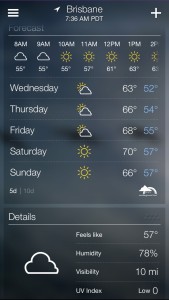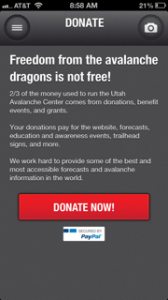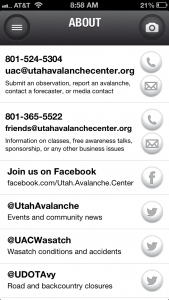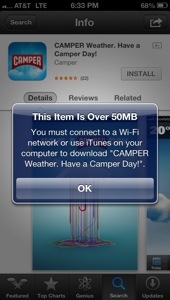Very few weather apps bother to include either a terms of service (TOS) or a privacy policy within their app. From a consumer perspective, I look for a privacy policy that spells out what the app as well as company making the app intends to do with the data it collects from my phone or that I volunteer. If it’s a terms of service, I might quickly scan it to understand what I’m entitled to from the service if I pay for it as well as what the company considers their versus mine (example: every photo on your phone is now ours and we can stick it in ads and not pay you for it). Because we’re often talking about data here, there can be a fine line between what’s considered a privacy issue and a commercial declaration. Both TOS and privacy policy documentation should be easy to find within the app.
I tend to look for a distinct document for both although it’s ok if there’s a single document where there are clearly marked sections speaking to privacy versus terms of use. There’s no reason these text files should not be bundled into the app as opposed to linking to a site. A site can change, which is convenient to the developer, but it’s not fair to the consumer if terms change on a web site but you customer is actively using a past version of the app that at the time of download had different terms. Bundling changes into each version assures that your app and your terms remain in sync per version.
Most developers are unaware of the moves by California’s Attorney General to enforce consumer privacy protection around apps. Assume that all apps distributing through iTunes are technically doing business in California. Here is a PDF of best practices by the AG.
 Less than 20% of the weather apps I’ve reviewed have included either a Terms of Service or a Privacy Policy. As an industry, it means a lot of individual companies and developers are not starting out with a consumer mindset.
Less than 20% of the weather apps I’ve reviewed have included either a Terms of Service or a Privacy Policy. As an industry, it means a lot of individual companies and developers are not starting out with a consumer mindset.
There are apps that stand out in terms of what I’m categorizing as “customer friendliness”. KGW.com’s Portland Weather app tucks a TOS and privacy policy in it’s About US page. I would consider drawing inspiration from best practices seen in this app. Now that I said that, don’t go copy it. Get yourself some good legal advice customized for your service, make the design work for your app, but pay attention to how the Portland Weather app does a great job at making the documents legible and easy to find within the app.
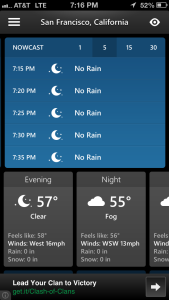
 The U.S. Department of Labor is offering the
The U.S. Department of Labor is offering the 
